We're encouraged to purchase things in many ways. Sometimes these ways are very sophisticated, original even. But there are also methods that the E-Commerce industry is eagerly using.
They've become standard sales strategies.
A million dollars for a person who never encountered the label: Top Selling. Or to those who haven't seen the specially highlighted Recommended category.
Is there anyone who has never wanted to buy a product from the Sale category? Or a currently promoted one whose price has been reduced for a very specific time.
So today, we write about reinforcing the need to buy with psychological mechanisms and design solutions supporting a positive User Experience.
Let's get started!
User Experience drives sales in E-Commerce
The attractiveness of an offer is a never-ending story. It consists of far too many elements and factors, so it's challenging to address them in a single article.
Just as there are too many elements responsible for online sales to cover them here, therefore we'll focus on a narrow area, but we'll discuss it in more detail.
It's very obvious today that User Experience (UX) drives conversion and fuels sales to a large extent.
The "where" and "from whom" we buy are now less important questions. Although please don't draw the incorrect conclusion from this that it's irrelevant! It's precisely the opposite, which we'll write about below.
"How" we buy plays a much more important role today.

We should remember that User Experience has a direct impact on specific, measurable performance metrics that are commonly used in E-Commerce.
Namely, it influences the following:
- purchase frequency
- retention period
- average purchase value
- conversion rate.
So what are they, and how do they express the experience that E-Commerce clients have in online stores? What do they pay attention to? What kind of experience (way of buying) do they expect?
Among the factors that matter the most are the following:
- flexible, trouble-free, and fast payments
- home page, category page, and product pages designed to get you to and/or select a specific product as quickly as possible
- navigation that makes shopping understandable and enjoyable
- search, filter, and sorting engines.
As well as:
- category, subcategory, and product labels
- descriptions, specifications, information, online store reviews, recommendations, comparisons, and ratings
- comparison, wishlist, and sharing functions
- functions supporting showrooming and webrooming
- methods of presentation (in particular, this applies to photos, animations, and videos).
Okay, it all sounds compelling, but one may ask: how do you know it even works?
And rightly so; asking difficult questions and finding reliable answers is necessary, preferably through research.
E-Commerce User Experience Metrics
Determining the effectiveness of recommended UX patterns requires qualitative research.
Quantitative data, while helpful, will tell us little about the motivations, emotions, feelings, problems, and costs that occur during the use of an online store.

UX metrics require research and more or less direct contact between a researcher and a respondent. However, we should note that more and more studies are performed in a remote formula.
Despite this inconvenience, they allow us to measure 3 extremely important issues.
Namely:
- task completion – this metric allows us to diagnose problems with performance, task completion, and achievement of set goals and identifies critical problems
- satisfaction – allows us to determine the level of satisfaction/dissatisfaction after purchase and reasons for such assessments
- willingness to recommend a store – determines the frequency and reasons for referrals, recommendations, and sharing offers.
User Experience metrics, in their most basic form, make it possible to diagnose and understand an online store's most common usability problems.
They allow us to see the elements that make the buying process costly, frustrating, confusing, and not worth the effort.
They make it possible to indicate with what feelings, assessments, beliefs, and attitudes a customer leaves a store.
Lastly, they allow us to obtain confirmation of satisfaction in the form of concrete actions that result from positive experiences during a purchase.
We rarely recommend terrible stores. It would affect our self-esteem too much and influence others' opinions of us.
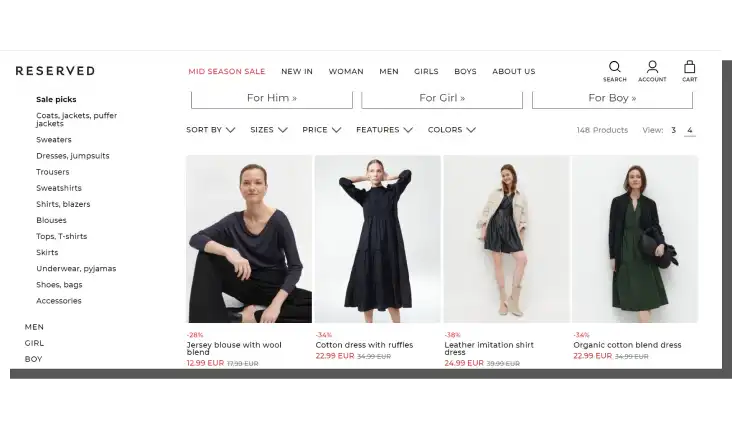
We're much more likely to recommend something to someone when we remember experiences, effects, and opportunities as positive, beneficial, and profitable.
Mobile Friendly or M-Commerce also sells
The matter is so serious that this recommendation needs to be discussed separately. M-Commerce is an independent and equal channel. We simply need to adapt to its requirements.
Supporting online sales in the mobile channel is all about supporting functionalities, designing solutions, and implementing UX recommendations aimed at facilitating task performance on mobile devices.
In order to do so, we need to:
- design mobile stores in terms of tactility, gestures for navigating, and availability of key functionalities in the thumb zone
- reduce the number of elements to only the necessary ones, which significantly improves the experience on smaller screens, with lower resolution, or on devices with less available RAM
- improve the readability of buttons and calls to action (CTAs).
But also:
- simplify the forms and the amount of input data acquired with them
- speed up the payment process
- support filling out forms with autocomplete function
- actively exploit the native functionalities of mobile devices (such as geolocation)
- implement technologies, solutions, and standards (e.g., RWD, Google AMP).
At the same time, we should remember that we no longer live in the days when the mobile channel was:
- a curiosity
- a scaled-down version of a desktop website
- a supplement to the desktop version of a store.
Customers often move smoothly between channels (e.g., they view an offer on a desktop computer, finalize it on a mobile phone, and pick up a product in a stationary store).
Therefore, all channels should support each other, be maximally integrated, and offer a continuous, seamless, reliable experience for online store customers.
General UX recommendations that support E-Commerce sales
Before we move on to our most popular strategies to support E-Commerce sales, we will supplement the above findings with more patterns and recommendations.
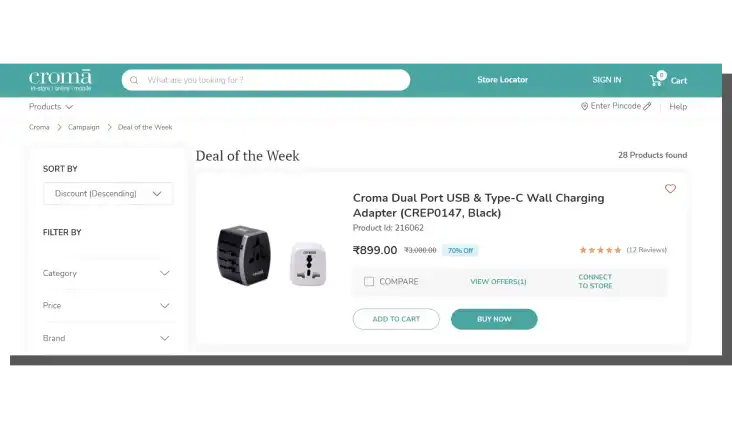
If we want to facilitate customers' product selection, purchase process, and payment finalization, we should:
- offer a smart search function
- support customers in real-time (e.g., using chatbots)
- implement minimalist solutions, layouts, and aesthetics
- support navigation (e.g., with different types of menus and breadcrumbs)
- offer the possibility of purchase in any formula (guest, regular customer, new user)
- provide access to reviews, recommendations, expert and/or community support.
As well as:
- cultivate credibility and trust (e.g., through certificates, awards, tests, trust marks, and external institutions whose reputation is significant)
- offer wishlists, scan & find functions, image and voice search
- pay attention to the legibility of text and visual attractiveness of photos
- refine micro-interactions, use micro UX animations
- ensure the most extensive accessibility (both in terms of technology and diverse needs, capabilities, and predispositions of customers).
Now that we have a clear view of the situation, we can move on to the main point.
Top Selling – an incentive with Social Proof UX
Probably everyone has come across this term. What is Social Proof?
In the article "Social Proof," published on the Interaction Design Foundation blog, this term is defined as the tendency for people to imitate other people's behavior.
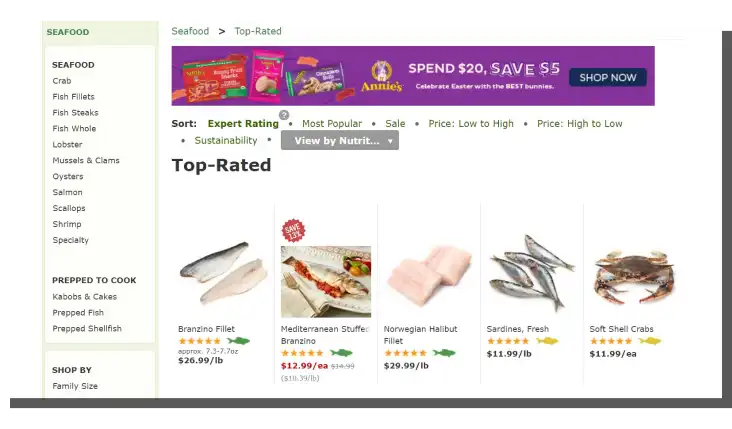
We should note that we often imitate others unconsciously. We're confident that our decision was independent and not the result of imitation, which is rarely true.
Social proof in sales, in User Experience, in E-Commerce/M-Commerce is used for two reasons:
- to increase the credibility of a store
- to reinforce the attitude of adaptation or acceptance.
In E-Commerce, social proof is communicated in very different ways.
The most popular forms include:
- displaying reviews and ratings from other customers
- using audits, surveys, tests, reports, analyses, case studies, third-party recommendation
- showing the number of customers who purchased a product
- recommendation of a product by people who are trusted, authoritative, or popular
- use of contexts (e.g., cooperation of a manufacturer with other well-respected ones).
We should keep in mind that in E-Commerce, we always have to present two necessary things to convince a customer to buy.
We must provide them with evidence regarding the following:
- the store itself
- the given product.
So, social proof must confirm the quality, usefulness, usability, and indispensability of "what is being sold" and the credibility and satisfaction of "from whom we buy."
Everything counts, especially in E-Commerce, so opinions are worth supplementing with quantitative information.
There are many solutions out there, the most popular include:
- an evaluation in the form of an arithmetic average
- number of stars
- number of buyers
- number of customers
- number of ratings and reviews
- number of awards
- the amount of use of external systems solutions (for example, in terms of security)
- a number of people assigned to a category that determines the social distance (anonymous users with similar traits, our friends).
However, we should remember that the use of social proof can't be arbitrary or random and should be tailored to:
- the product and its buyers
- the values and benefits that customers have and expect to receive
- to reduce risk, not to manipulate
- the severity of the problem (e.g., too strong or too weak social proof is equally dangerous and undesirable).
Recommended Products – personalizing the UX of an offer based on purchase history
E-Commerce customers are the group that receives the most recommendations. Sometimes entirely without thought, without the slightest justification or reason, in the form of push ads. And even more often in the form of commercial information, rightly called SPAM.
Of course, the Recommended Products category makes sense as a sales tool.
In particular, it'll be helpful for:
- store's customers who make subsequent purchases in it
- new customers who were redirected from search results to a category page or product page
- customers who found their way to a store after clicking on an ad they received in the store's newsletter.
Why exactly is it worth recommending something to them? Because such a recommendation has some root in an awakened need expressed through action. It doesn't refer to the need to make an impulsive purchase, but a (more or less) planned one.
Secondly, it stems, or should stem, from purchase history and knowledge of customer preferences.
The Recommended Products category is a personalized offer, so it's built on data related to:
- choices (specific purchases)
- preferences (e.g., in the form of Wishlists, benchmarks, also based on applied product filtering)
- behavior (e.g., keywords used in the store's search engine)
- assessments and expectations.
Personalization in E-Commerce focused on improving User Experience is all about:
- UI personalization (e.g., features for remembering and analyzing choices)
- communicating the reasons for the recommendation, the criteria based on which it was created
- combining Recommended Products with social proof
- minimizing information – presenting a narrowed offer to facilitate choice.
But also:
- attribution personalization which involves determining the characteristics that encourage purchase (e.g., price, delivery method, and conditions)
- navigational personalization – making it easier to find a product again
- predictive personalization – created based on advanced algorithms that analyze future preferences based on past choices.
It's worth clarifying that personalization isn't the same as customization, as NN Group researchers convince us in the article "Customization vs. Personalization in the User Experience."
The first one is performed by the system and doesn't require any work or involvement from the store customer. The second one works the other way around.
On sale – designing promotions and discounts
Discounts, promotions in online stores – who doesn't like them? Who among us isn't a fan of bargains? And a bargain makes the sale simple. It makes us like the online store more.
Especially since there is even a category of E-Commerce customers particularly interested in discounts. In the article "Designing for 5 Types of E-Commerce Shoppers," researchers from NN Group described as many as 5 types.
Bargain Hunters are one of them. By the way, we recommend our article on/E-Commerce pricing design strategies (Pricing Page).

Caution!
Simply lowering the price isn't enough today to entice a customer to buy. The method of encouragement is equally important.
Most often, online stores encourage customers through:
- cross-selling
- flash sale
- elements of gamification, engaging customers in interactive quizzes, surveys, or ratings
- with the free option of delivery and/or return
- discount for subscription formula
- memberships or loyalty, referral programs
But also:
- competitions
- price incentives and additional free product samples
- multi-purchase
- appealing to status and a sense of belonging to exclusive clubs
- the mechanism called percentage-based sales (a discount proportional to the volume of purchase)
BOGO formula – Buy One Get One.
How should an online store inform potential customers about discounted prices?
As the authors associated with NN Group note in their article "Communicating Ecommerce Discounts and Promotions," communicating promotions on a homepage using a banner is insufficient.
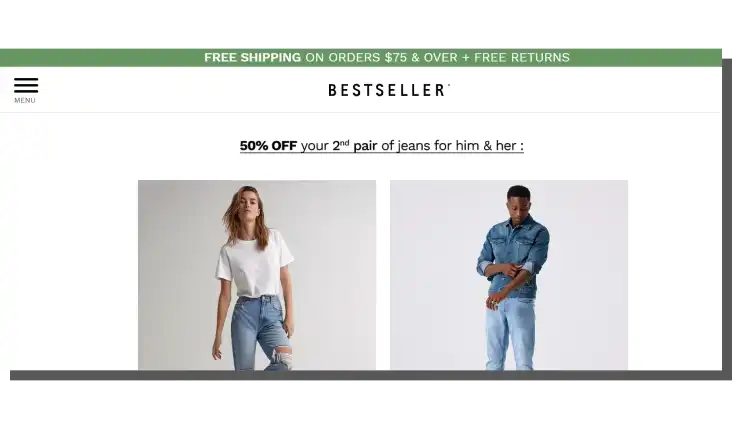
What do they suggest? We definitely should:
- create separate categories for discounted products
- label products promoted on their native category pages
- mark product pages with appropriate distinctions
- implement discount banners on most of the online store pages
- create clear messages explaining the terms of a given promotion
- clearly define the terms of the promotion if customers buy more products
- remind about the promotion also on the shopping cart pages
Designing Promotions according to the psychological rule of unavailability
A sale is almost universally identified as a final chance. It's also associated with competition. Following the rule of "first come, first served."
In the psychological sense, promotion is based on the strongly influential rule of unavailability.
The rule of unavailability describes the mechanism of a growing need for possession. In economics (supply, demand) manifests itself by giving more value and importance to rare, hard-to-find products. The higher the demand, the lower the supply, and the higher the price.
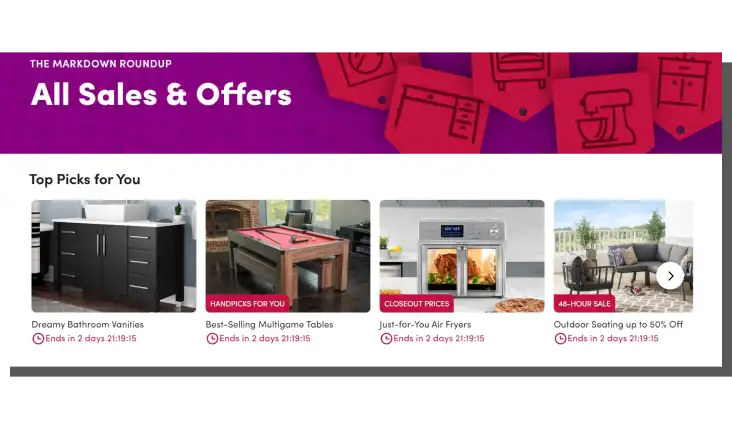
In the case of promotions, another aspect of the rule of unavailability comes to the front, namely the sense of loss, of discomfort.
If we see a product as attractive, but we don't necessarily need it at the moment, and at the same time, we learn that it will soon be unavailable, then...
We feel that we're losing control of the situation. And the ability to buy means having control. And this increases the value of a given item, reinforcing the need for ownership. We will want to purchase the product to avoid a sense of loss.

So much for theory.
How to reinforce the need to buy with UX solutions?
Preferably through:
- creating a separate category in the menu
- specific display of stock, a number of remaining products
- countdown to the end of the promotion
- reinforcing the desire to buy with additional benefits (e.g., attractive installments, free delivery, price discount).
As well as through:
- cyclicality of sales (e.g., in tandem with the seasonality of offers)
- visually displaying price differences (expressed in % or numerically – depending on which variant guarantees a stronger difference effect)
- regularly alert customers to planned sales (e.g., by e-mails).
Top Selling, Recommended, On Promotion, Sale – 4 ways to encourage purchase. Summary
- UX is mainly responsible for E-Commerce sales volume.
- User Experience also influences performance metrics: purchase frequency, retention period, average purchase value, and conversion rate.
- E-Commerce UX metrics allow us to diagnose an online store's most common usability problems.
- Supporting sales in the mobile channel is all about supporting functionalities designed to make tasks performance easier.
- The smart search function and the ability to purchase in any formula (guest, regular customer, new user) ensure User Experience improvement in E-Commerce.
- Social proof is the tendency of people to imitate other people's behavior.
- In E-Commerce/M-Commerce, social proof is communicated by, among other things, reviews, ratings from other customers, experts and specifying the number of customers who have purchased a product.
- The use of social proof should be tailored to the product and its buyers.
- The Recommended Products category is particularly useful for regular customers, new clients, and people who found their way to the store after clicking on an ad.
- Personalization focused on improving User Experience includes features that support choice analyzers and combining Recommended Products with Social Proofs.
- Online stores often encourage purchases through cross-selling, flash sales, free delivery, and/or return options.
- Promotions are associated with last chances and competition. They're based on the unavailability rule.
- Creating a separate category in the menu, displaying the number of remaining products, and counting down the time left to the end of the promotion are the most popular techniques that reinforce the need to buy the product.




